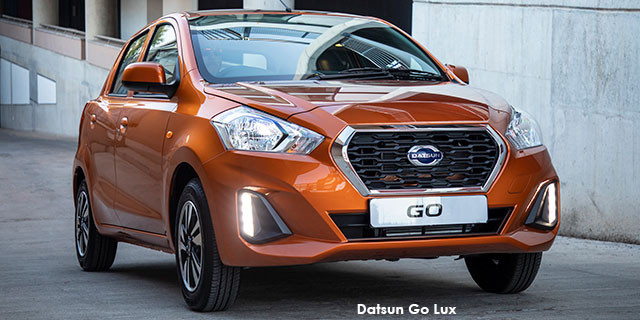The updated Go range finally offers a level of standard safety the buying public deserves. Is it enough to trouble the competition?
The global relaunch of the Datsun brand by Nissan in 2013 brought with it the promise of a focus on affordable motoring aimed at those to whom new-car ownership was an agonisingly unaffordable stretch. Local sentiment for the previously popular blue badge aside, the 2014 introduction of the first Go hatchback, priced at under R100 000 and with the full backing of Nissan South Africa, seemed to fulfil this promise and rightfully had many eager customers flocking to freshly painted showrooms.
A closer look at the standard specifications list for the Go offerings – and highlighted in our first test of the top-of-the-range derivative – showed a notable omission that, in a modern age of congested motoring, had us concerned. While at the time Nissan SA quoted research suggesting customers were more focused on efficiency and asking price over passive safety, as a trusted consumer magazine, we simply couldn’t ignore that neither an ABS-assisted braking system nor a single airbag was fitted to this package.
Despite these concerns – and proving just how price sensitive this segment is – Datsun has sold 25 000 units (including the seven-seater Go+) in South Africa to date. The good news is that, with the introduction of a revised local line-up comes some significant updates to not only the look and feel of the Go range, but also the safety package.
Fitted with upgraded 14-inch alloy wheels (previously 13s) and boasting a somewhat optimistic optional rear spoiler and strictly cosmetic roof rails, the updated 1,2 Lux tested here gains new bumper designs that include LED daytime-running lights and parking sensors aft. Those with a keen eye will note a 10 mm gain in ground clearance (to 180 mm) compared with the previous model. We do, however, have reservations about how easy it might be to find replacement India-sourced MRF-branded tyres in our market.
There’s more good news inside, where the first-generation Go’s bench front seat has been replaced with two single pews separated by a conventional handbrake (the first Go featured a bakkie-style pull lever) and added storage space. While neither the driver’s seat nor the steering column offers height adjustment (or reach on the wheel), all testers commented favourably on a raised driving position complemented by the well-considered (tall) placement of the transmission lever remaining within easy reach.
A highlight of the revised Go is a full-colour seven-inch touchscreen infotainment system that’s able to pair with both Apple CarPlay and Android Auto, while also offering Bluetooth, USB and aux-in functionality. This modern-looking unit was at first listed as standard fitment only “during the launch period”, but Nissan has confirmed it will remain part of the package for the foreseeable future.
Tipping our scales some 74 kg heavier than the 1,2 Lux model tested in our December 2014 issue, based on our time spent with this revised unit, we’d suggest at least a portion of this additional mass is as a result of a more generous application of sound-deadening materials throughout. While the 1,2-litre, three-cylinder engine remains relatively lumpy at idle, its eager workings are no longer as intrusive as before. Thanks to its free-revving and feisty nature – and despite the weight gain – we managed to better the 0-100 km/h sprint time of the previous test unit by some 0,71 seconds. On the day we also managed to improve the average fuel-consumption figure measured on our standardised fuel route, from 6,54 L/100 km measured in 2014 to 5,60 L/100 km in the current car.
A more pertinent test figure that needed improving over our first experience with the Go was the braking times. Here, despite some initial lock-up, the newly installed ABS system proved its worth by lowering this vehicle’s average stopping time from an alarming (by modern standards) 3,71 seconds to a fraction over 3,0 seconds. That’s now in line with the average for this segment. That dual front airbags have been added throughout the Go range adds increased peace of mind to this package.
TEST SUMMARY
Light on its feet and easy to manoeuvre round town, the small updates granted to the local Go range have proven significant. While its plucky drivetrain, quirky styling and absorbent ride quality remain largely unchanged, it’s impossible not to feel more assured and confident behind the wheel of a small car that’s fitted with essential safety features.
While the updated Datsun Go’s report card is looking decidedly more favourable in 2019, the added equipment, including the aforementioned infotainment system, has resulted in a revised asking price placing the Go range at the mercy of some competent rivals, not least our 2018 Top 12 Best Buys champion in this segment, the Suzuki Celerio, plus Kia’s accomplished Picanto.
ROAD TEST SCORE

|
Original article from Car








